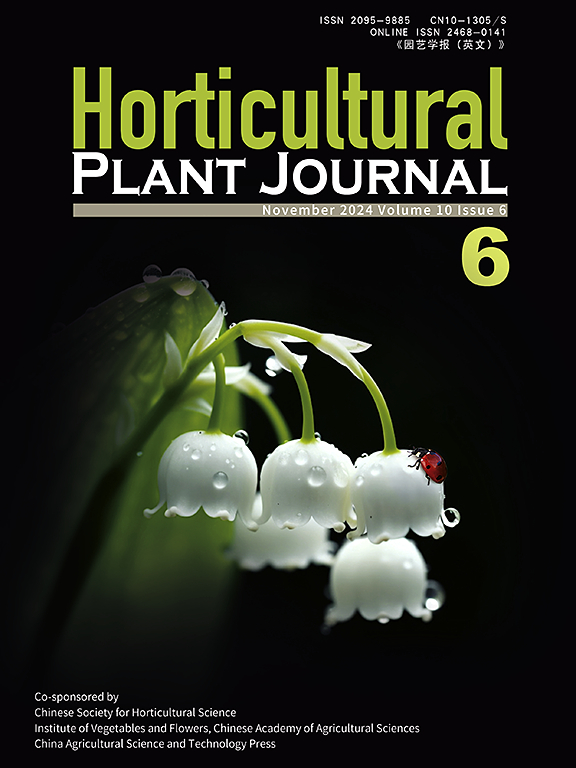Pear genomes display significant genetic diversity and provide novel insights into the fruit quality traits differentiation
IF 5.7
1区 农林科学
Q1 HORTICULTURE
引用次数: 0
Abstract
The pear ( spp.) is well known for diverse flavors, textures, and global horticultural importance. However, the genetic diversity responsible for its extensive phenotypic variations remains largely unexplored. Here, we assembled and annotated the genomes of the maternal (PsbM) and paternal (PsbF) lines of the hybrid ‘Yuluxiang’ pear and constructed the pear pangenome of 1.15 Gb by combining these two genomes with five previously published pear genomes representing cultivated and wild germplasm. Using the constructed pangenome, we identified 21 224 gene PAVs (Presence-absence variation) and 1 158 812 SNPs (Single Nucleotide Polymorphism) in the non-reference genome that were absent in the PsbM reference genome. Compared with SNP markers, PAV-based analysis provides additional insights into the pear population structure. In addition, some genes associated with pear fruit quality traits have differential occurrence frequencies and differential gene expression between Asian and European populations. Moreover, our analysis of the pear pangenome revealed a mutated SNP and an insertion in the promoter region of the gene potentially enhance sepal shedding in ‘Xuehuali’ which is vital for pear quality. may play a role in the IAA pathway, contributing to a distinct low-auxin phenotype observed in plants by heterologously overexpressing this gene. This research helps capture the genetic diversity of pear populations and provides genomic resources for accelerating breeding.梨基因组显示出显著的遗传多样性,并为果实品质性状的分化提供了新的见解
梨(梨属)以其多样的风味、质地和全球园艺重要性而闻名。然而,导致其广泛表型变异的遗传多样性在很大程度上仍未得到探索。在这里,我们组装并注释了杂交种'玉露香'梨的母系(PsbM)和父系(PsbF)的基因组,并将这两个基因组与之前发表的代表栽培种质和野生种质的五个梨基因组结合起来,构建了1.15 Gb的梨基因组。利用构建的梨基因组,我们在非参考基因组中发现了 21 224 个基因 PAVs(存在-不存在变异)和 1 158 812 个 SNPs(单核苷酸多态性),而这些基因在 PsbM 参考基因组中是不存在的。与 SNP 标记相比,基于 PAV 的分析为了解梨种群结构提供了更多信息。此外,一些与梨果实品质性状相关的基因在亚洲和欧洲种群之间具有不同的出现频率和不同的基因表达。此外,我们对梨基因组的分析还发现了一个突变的 SNP,以及'雪花梨'中对梨品质至关重要的萼片脱落基因启动子区域的插入。这项研究有助于捕捉梨种群的遗传多样性,并为加速育种提供基因组资源。
本文章由计算机程序翻译,如有差异,请以英文原文为准。
求助全文
约1分钟内获得全文
求助全文
来源期刊

Horticultural Plant Journal
Environmental Science-Ecology
CiteScore
9.60
自引率
14.00%
发文量
293
审稿时长
33 weeks
期刊介绍:
Horticultural Plant Journal (HPJ) is an OPEN ACCESS international journal. HPJ publishes research related to all horticultural plants, including fruits, vegetables, ornamental plants, tea plants, and medicinal plants, etc. The journal covers all aspects of horticultural crop sciences, including germplasm resources, genetics and breeding, tillage and cultivation, physiology and biochemistry, ecology, genomics, biotechnology, plant protection, postharvest processing, etc. Article types include Original research papers, Reviews, and Short communications.
 求助内容:
求助内容: 应助结果提醒方式:
应助结果提醒方式:


